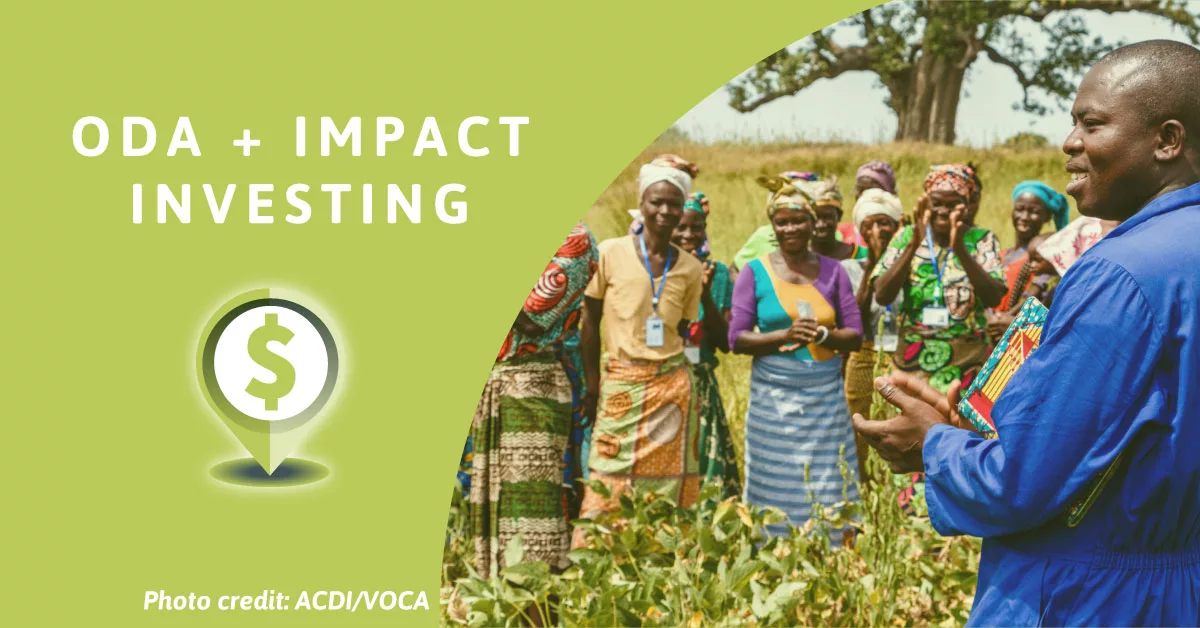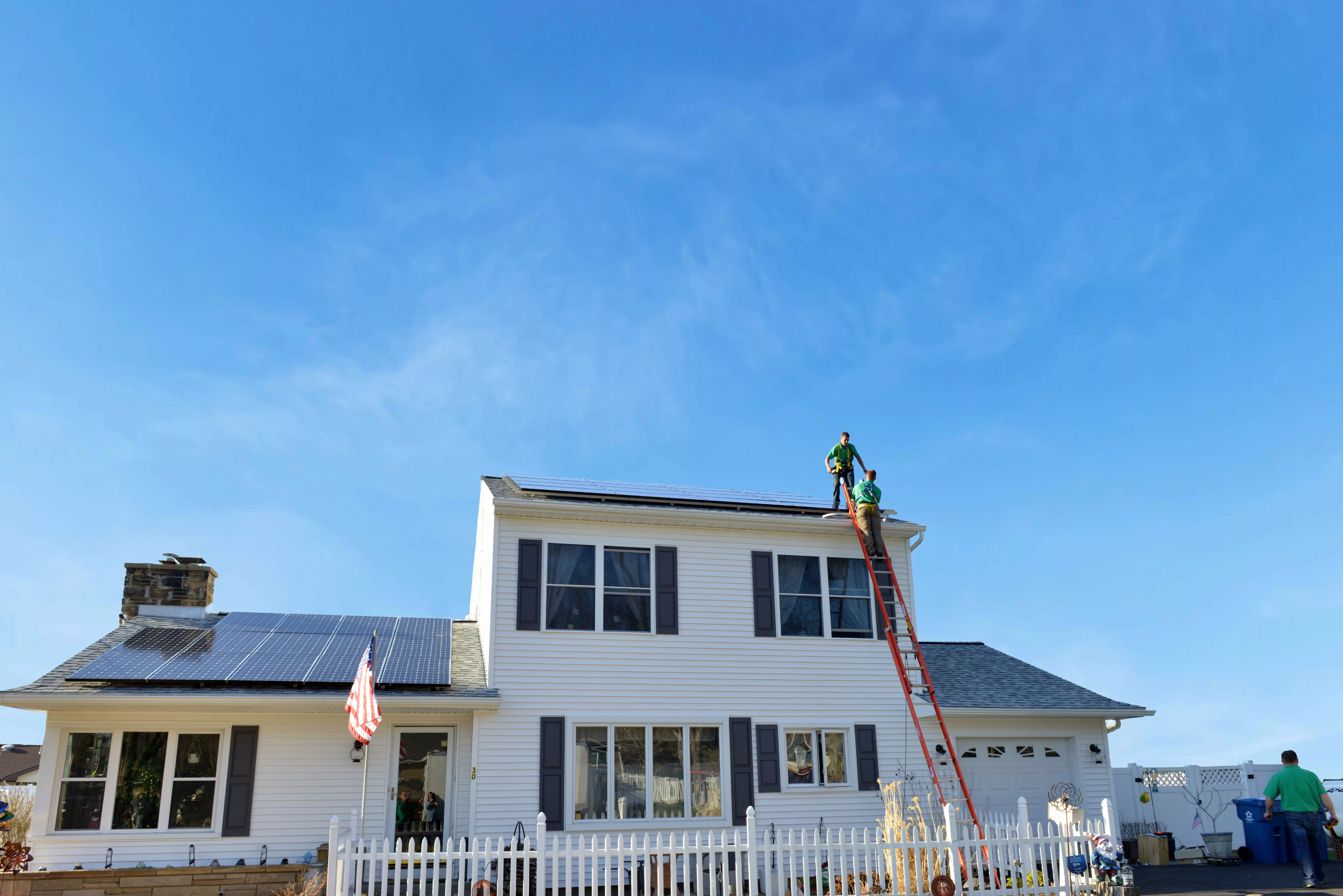A SOCAP guest post by Charles J. Hall, President and CEO, ACDI/VOCAFor almost 60 years, the international development community has been striving to transfer resources and techniques to the developing world in a way that will launch those countries onto sustainable paths to prosperity for their citizens. This idea, inspired by the success of the Marshall Plan in post-war Europe, was the driving force behind the early 1960s establishment of the United States Agency for International Development (USAID) and other bilateral aid agencies sponsored by Organisation for Economic Co-operation and Development (OECD) countries. Similarly, the World Bank’s original mandate to rebuild Europe evolved around the same time into a focus on the developing world. Other multilateral development banks have followed on that course in subsequent years.
The Problem with Official Development Assistance
Throughout the decades since the establishment of the Official Development Assistance (ODA) community, the “holy grail” of development assistance has been to make the positive effects of development projects continue after their official funding runs out. That has been a tough challenge, which seldom has been met.
The inability of ODA alone to succeed in this mission has been highlighted starkly by the consensus around a $2.5 trillion resource gap to achieve the Sustainable Development Goals (SDGs). The realization that private sector resources of this magnitude will be necessary is an evolution in thinking within the international development community that gives us hope of change. Allow me to illustrate this evolution from my own personal experience.
In 1978, I arrived at the U.S. Embassy in Nairobi as a freshly-minted State Department Foreign Service Officer. My responsibilities were economic reporting, trade promotion, and assistance to U.S. businesses operating in Kenya. It quickly became clear to me that there was a vast gulf between USAID’s development activities and the U.S. businesses I was assisting. And that separation was apparent across all OECD countries represented in Kenya. ODA actors were focused on direct interventions in the Kenyan economy to assist poor people, and they did not want to engage with the profit-making activities of private sector businesses. Similarly, businesses saw no benefit to engaging with the ODA agencies active in the country. As a result, ODA and market activities were completely separate from one another.
In the late 1980s and 1990s, I saw the same separation as an emerging markets banker working in Venezuela, Brazil, India, and Turkey. During that period, the two sets of players began to see some common interests, such as trade-driven economic growth; yet they remained largely in their own spheres.
In 2018, 40 years after my arrival in Nairobi, I joined ACDI/VOCA, an international development non-profit founded in 1963 as a part of the ecosystem that arose around the establishment of USAID. What I found at ACDI/VOCA was heartening. In just the past 10 years, both the international development and business communities have come to agree that the only way to achieve durable improvements in living standards is to work through market actors, not around them.
This has been evidenced in the ODA world by the emergence of market systems approaches to development, in which development organizations partner with market actors to address systemic constraints that limit inclusive growth. This has been the key to finding that “holy grail” of development: identifying inefficiencies in markets and helping local value chains address them. This is the only way to make improvements to those economies that benefit many and last far into the future, long after official funding has run out. And yet it’s still true that ODA alone cannot achieve the SDGs.
The Problem with Impact Investing
In 2018, I also found that the advent of market systems approaches in ODA had been paralleled by the increasing application of impact investing as an important tool for development. Both trends have been stimulated by a realization that the private sector has a crucial role to play in addressing that $2.5 trillion resource gap. In the case of impact investing, there is the additional element of offering an investor-investee dynamic, which is very different from the donor-grantee dynamic that is the norm in the ODA world.
But there has been a problem with impact investing. I hear everywhere that there aren’t enough investable deals to consider. This arises in almost every conversation I have with impact investment fund managers, regardless of where they sit on the investment objective spectrum. The corollary to this complaint is that there is too much capital committed to impact investing still sitting on the sidelines. One study estimates that less than 20 percent of funding committed to impact investing has been deployed in transactions.
The Solution to Both Problems
What can we do to solve these problems? My answer is that — just as we have seen a closing of the gap between ODA and the private sector — we need to close the gap between market systems-related ODA and impact investing. This is what we are doing at ACDI/VOCA.
To be clear, I am referring to the economic development side of ODA, not disaster relief or humanitarian assistance. But the essence of market systems economic development is to improve the health of a market system by influencing the rules, relationships, and resources that micro and small enterprises need to succeed in their economies. This is a process that simultaneously moves those enterprises in the direction of “investability” from the perspective of impact investors. We have been consciously engaged in this market systems-related ODA and impact investing linkage for the past five years, and we have learned a number of lessons.
First, many of the companies ACDI/VOCA supports in our market systems-related ODA work can drive growth in their sectors, which are often important sectors for the poor and marginalized. The companies we have identified, supported, and invested in through our ODA projects have demonstrated the tremendous value being left on the table for impact investment. For example, in Ghana, Tanzania, and Zambia, we have found sustainable success in helping rural enterprises build and grow commercially viable businesses that provide agricultural inputs and services to millions of farmers. These are the “missing middle” small and medium enterprises (SMEs) with some access to finance — possibly through microfinance or previous ODA grants — but no access to venture capital or growth capital. By helping them address shortcomings in not only capital, but also legal structure, accounting systems, and management capability, we move a business up to a level that makes them visible and attractive to impact investors.
Second, when you apply a market systems lens to identifying companies and building an impact investment portfolio, by definition, you are choosing companies with the capacity to drive systemic transformation. This transformation occurs through the replication of business models, such as the outgrower businesses that ACDI/VOCA catalyzed in Northern Ghana, or the crowding-in of new businesses, like the retail banking agents that ACDI/VOCA introduced into the agribusiness value chains in Bangladesh. This opens the possibility of creating portfolios of investee businesses mutually supporting one another in their economies, as advocated in the Omidyar Network’s 2014 publication “Priming the Pump.”
Third, many of the lessons learned by microfinance institutions over the past 25 years are relevant to SMEs in developing economies. For example, expanding the availability of finance to women entrepreneurs is a successful strategy. Gender diversity and social inclusion play ever-increasing roles in our market systems-related ODA work and, we believe, lead to better outcomes in impact investing as well.
And finally, there is room in the impact investing universe for funds of different style and scale. Those impact investors who are interested in fully risk-adjusted rates of return for their investments in frontier markets will gravitate to larger funds managed by larger, diversified asset managers. On the other hand, impact investors willing to forego some portion of their financial returns in order to make a positive difference in the world will gravitate to smaller, more focused funds willing to take more risk in order to achieve systemic development outcomes.
To take advantage of these lessons, ACDI/VOCA’s affiliate AV Ventures has established a pilot fund in West Africa. AV Ventures also will soon launch a second pilot fund in Central Asia. Both are regions where we have decades of ODA experience. In both funds, we are focused on making a link between our market systems-related ODA project work and newly investable SMEs at the lower end of the impact investment target market — those “missing middle,” small but growing businesses that offer so much in terms of systemic improvements to their economies.
We are convinced that this market segment offers truly attractive investment opportunities as these businesses grow in both scale and number. Eventually, with proven business and investment models, SMEs and funds that invest in them will be able to attract investment from larger funds. We have already seen this evolution in microfinance. Traditional lenders and investors were skeptical of the profitability of reaching the microenterprise market. But early pioneers, sometimes in partnership with ODA actors or nonprofits, and, eventually, risk-tolerant private sector players proved products for this market. Specialized institutions grew, became sustainable, and only then began to attract debt and equity from funds. With a new model demonstrated, commercial banks expanded into the market as well. We expect to see the same evolution in non-microfinance SME impact investing.
A Final Thought on “Blended Finance”
Blended finance is defined by the World Economic Forum as “the use of catalytic capital from public or philanthropic sources to increase private sector investment in developing countries to realize the SDGs.” Blended finance can take many forms in the structuring of transactions, but I think of it as yet another way we can pull economic development-related ODA and impact investing closer together for their mutual benefit. ODA is one form of public funding that can catalyze private sector investment to realize the SDGs. Examples of this being accomplished in the structuring of specific transactions are not easy to find, but I would argue that what ACDI/VOCA is developing is a form of “sequential blending,” in which public ODA funding comes first and leads directly to subsequent private sector investment. This is another example of how ODA and impact investing can work more closely together to make the world a better place.
We at ACDI/VOCA look forward to SOCAP to connect with our peers on this and other topics important to the future of the international development community.
About the Author
Charles J. Hall serves as president and chief executive officer of ACDI/VOCA. Mr. Hall has broad experience in government, banking, entrepreneurship, and social-enterprise development. He assumed executive leadership of ACDI/VOCA in June 2018. Prior to joining ACDI/VOCA, Mr. Hall served four years in senior presidential appointments at the Export-Import Bank of the United States (EXIM Bank). He resigned his presidential appointment in December 2017. During the five years prior to his most recent U.S. Government service, Mr. Hall was chief executive of a London-based nonprofit established to design and manage community-based agroforestry and forest protection programs in sub-Saharan Africa. He earned his Bachelor of Science degree in economics from the Wharton School at the University of Pennsylvania and a Master of Business Administration from Columbia University in New York.
Resources
- “Impact investment to close the SDG funding gap,” United Nations Development Programme, 2017
- “Priming the Pump,” Omidyar Network, 2014
- “The State of Blended Finance 2019,” Convergence, 2019





